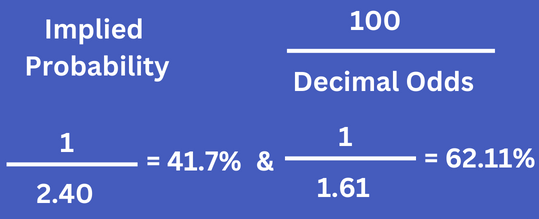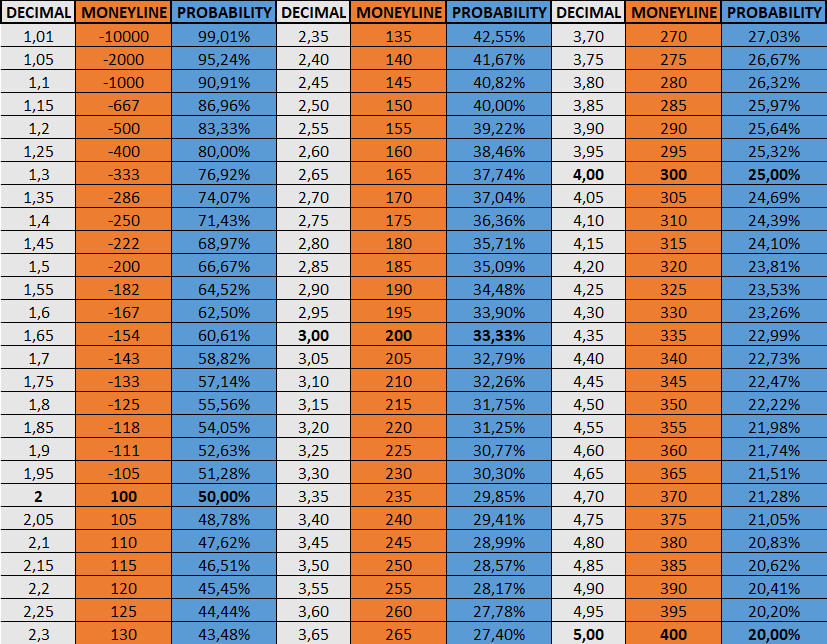Decimal vs Moneyline odds and Probability
Sports betting odds come in different formats depending on the region and sportsbook. The two most commonly used odds formats are Decimal odds (European odds) and Moneyline odds (American odds). While both formats represent the same underlying probability, they are displayed differently and require different calculations. Understanding these odds is crucial for bettors who want to make informed decisions and maximize profits.
What Are Odds and How Do They Represent Probability?
Odds in sports betting represent the implied probability of an event happening. The lower the odds, the more likely the event is to occur; the higher the odds, the less likely the event is to occur.
- Decimal (European) Odds
Decimal odds are widely used in Europe, Canada, and Australia. They are easy to understand because they directly show the total payout per unit wagered, including the original stake. It is very easy to calculate probability from them:

- Moneyline (American) Odds
Moneyline odds are mainly used in the United States. They are displayed as either positive (+) or negative (-) numbers.
- Positive odds (+) indicate how much profit you would make on a $100 bet.
- Negative odds (-) indicate how much you need to bet to win $100.
- Comparing Decimal and Moneyline Odds & implied probability

As shown, both formats represent the same probability, but they are displayed differently.
Conclusion
Understanding the difference between Decimal (European) and Moneyline (American) odds is crucial for bettors. Decimal odds provide a straightforward way to calculate total payouts, while Moneyline odds are more intuitive for American bettors.
Regardless of which format you use, always compare odds across multiple sportsbooks to ensure you are getting the best value. The higher the odds, the better your potential payout. By mastering odds and probability, you can make smarter betting decisions and increase your chances of long-term success.





Nice!